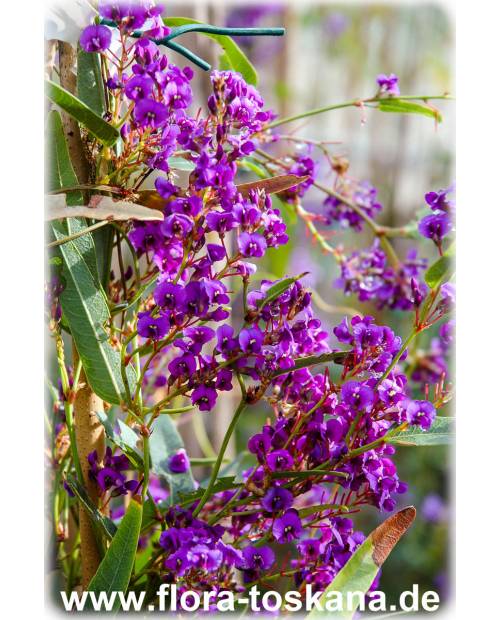Melia azedarach - White Cedar, Chinaberry, Rosary Tree, Persian Lilac
While the orange-skinned seeds of the Zedrach Tree (Melia azedarach) were used in the past to make rosaries (Bead Tree), today we mainly enjoy the ornamental value and the lilac, fragrant flowers (Persian Lilac) of the shady trees (Chinaberry), which are very common in the Mediterranean region.
The Chinaberry (Melia azedarach) is a fast growing, extremely modest tree with pinnate leaves similar to the ones of an ash tree. The lilac-scented flowers appear in spring and are followed by decorative fruit clusters with orange berries in autumn. Its loose crown provides shade, making it a popular tree for alleys, parks and gardens in many arid areas. Names like Persian Lilac, Chinaberry or Pride of India indicate its worldwide popularity. In our country, the deciduous Chinaberry is an attraction not only in big winter gardens. Since it tolerates frost, it can be planted in a wind protected place in the garden. It prefers sandy and well-draining soil and as a young plant should have a winter protection. By the way: its name Rosary Tree derives from the hard seeds that in earlier times were used to make rosaries.![]() Quality: fragrant flowers; attractive berries; elegant pinnate leaves; shady crown; modest & easy to care
Quality: fragrant flowers; attractive berries; elegant pinnate leaves; shady crown; modest & easy to care![]() Use: in pots from April to October outside on balcony, terrace and in the garden – during winter indoors; all year in an unheated greenhouse; planted in the garden (with winter protection)
Use: in pots from April to October outside on balcony, terrace and in the garden – during winter indoors; all year in an unheated greenhouse; planted in the garden (with winter protection)
Data sheet
- Family
- Meliaceae
- Origin
- Asia (mediterranean)
- Flowering period
- Spring
- Color of flowers
- White
- Fragrance
- Fragrant flowers
- Growth
- Tree
- Location
- Full sun
- winter temperature
- Hardy
- Minimum temperature
- -15 °C
- Hardiness Zones
- 7
- Height
- mehr als 5 m
You might also like
Customers who bought this product also bought:
















































